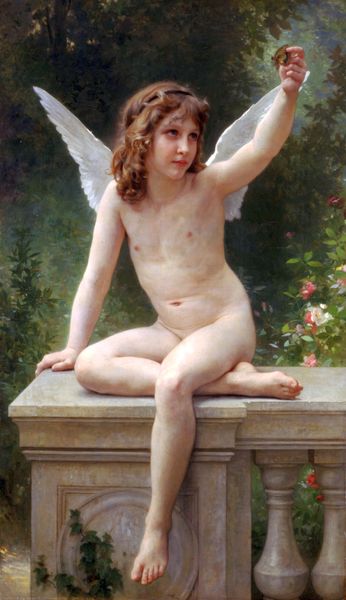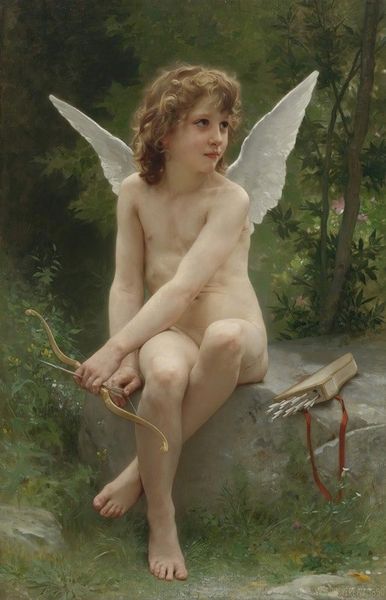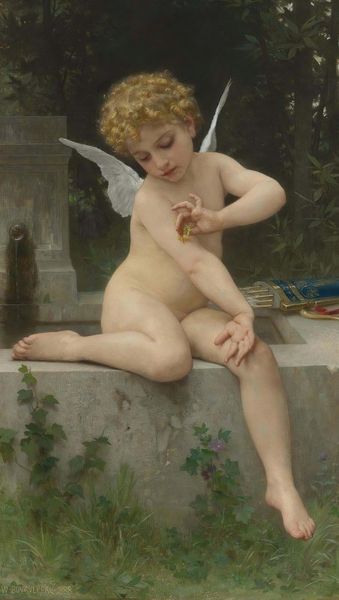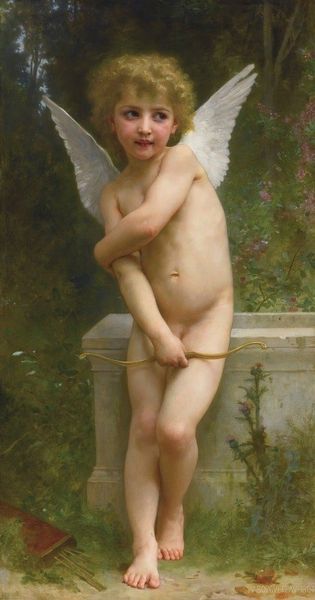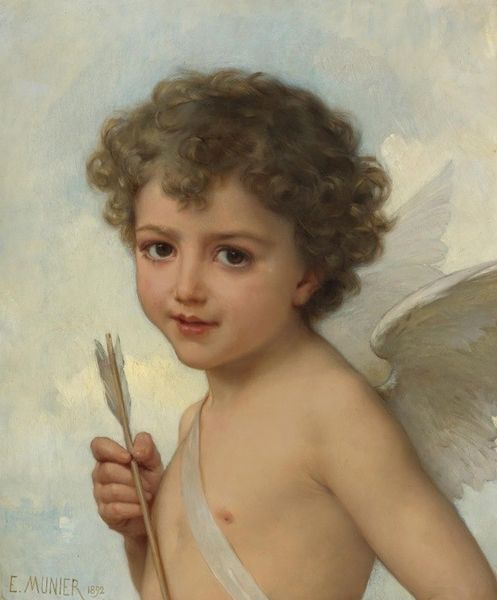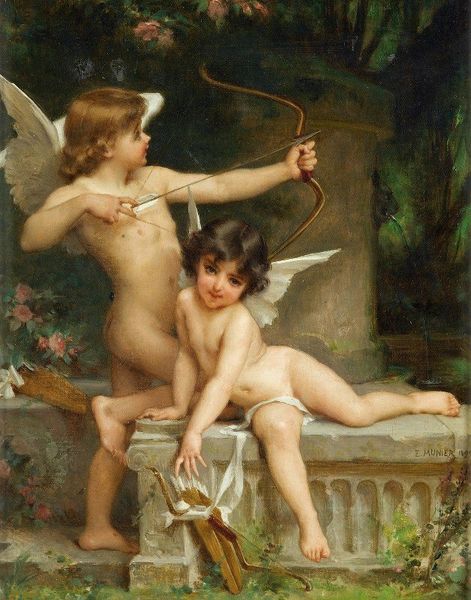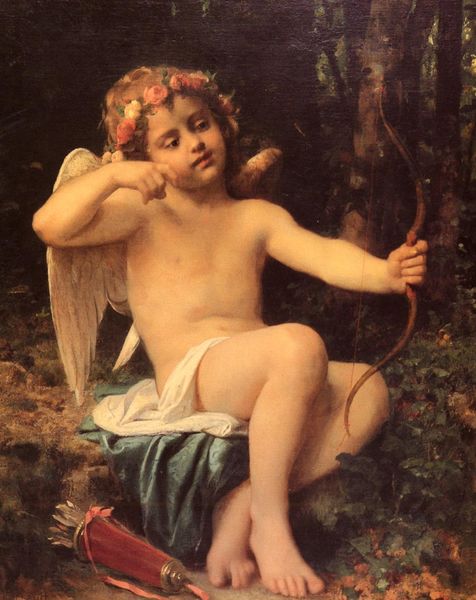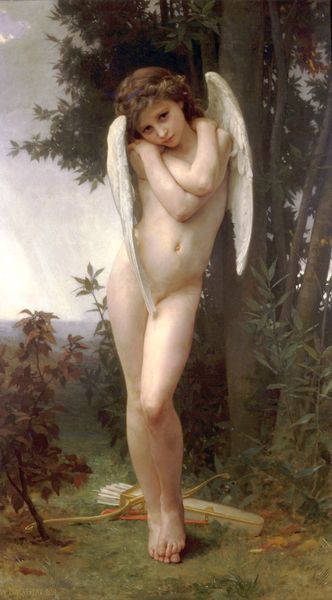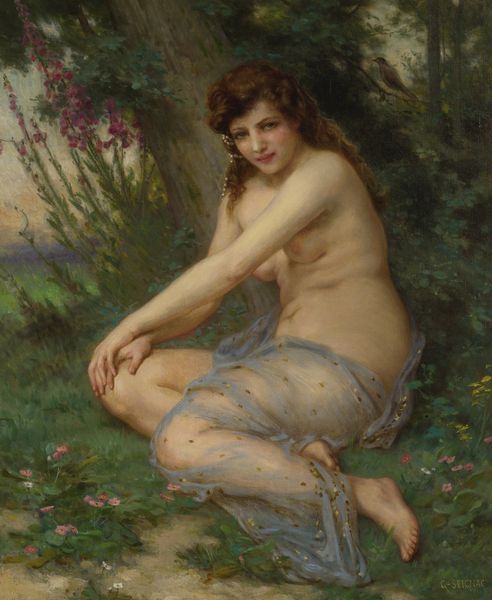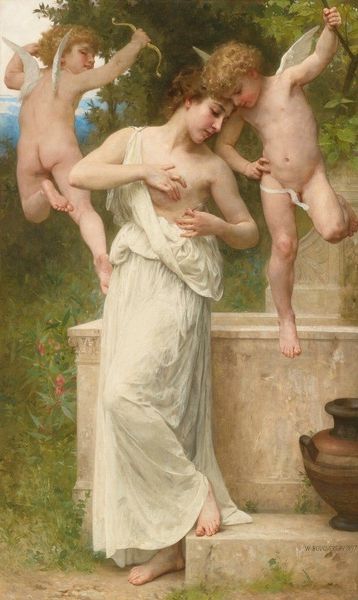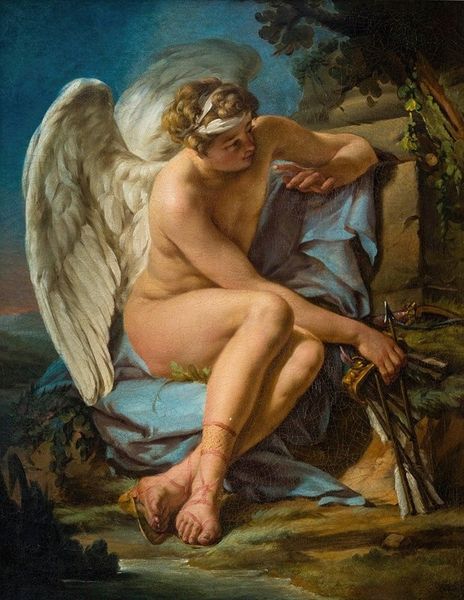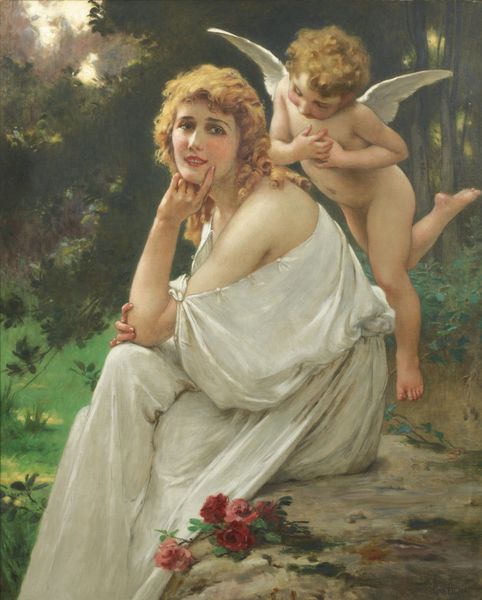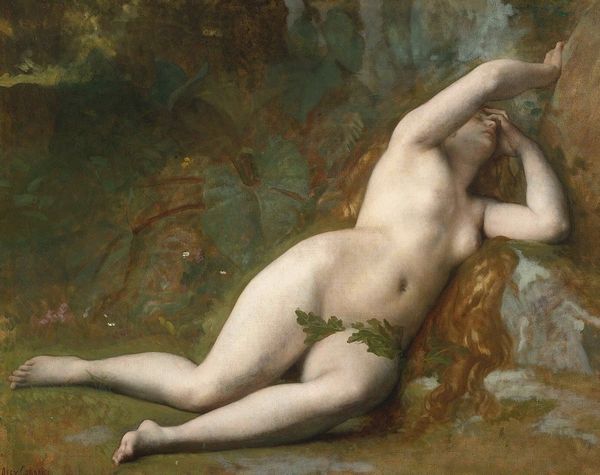
Copyright: Public Domain: Artvee
Curator: Right now, we're standing in front of William Bouguereau's "L'amour à l'épine," painted in 1894. It's quite a striking image, isn't it? Editor: It is. There's such an overwhelming sense of peace in this image, though. Like watching someone in their own little world, totally oblivious. Except... there's the title. Suddenly that serene gaze becomes knowing, almost melancholic. Curator: Ah, yes! Love Among the Thorns, or Cupid Pricked. The prick of the thorn symbolizes the pain that often accompanies love. Note the languid pose, the almost hesitant touch of his toes, like testing the waters before diving in. It echoes a deeper contemplation about love’s complexities. Editor: He seems utterly absorbed in the act of inspecting his foot! I'm curious about the classical idealism in his depiction. It’s a specific archetype: a winged god-child, yes, but it’s as much about capturing beauty and the perfection of youth. What does the figure, his features and pose, borrow from classical antiquity and mythology? Curator: Precisely! Bouguereau was deeply influenced by classical art and mythology, aiming to represent ideal beauty in his paintings, he also makes direct allusions to Venus and Cupid and that is apparent with this oil on canvas piece. And his cupid’s self-absorption, examining that tiny prick, shifts our focus to that hidden potential for hurt. It's a kind of subtle commentary on love's vulnerable side, don't you think? Editor: It also draws on very loaded and very long histories. As an iconographer, it also resonates the symbolism of a broken arrow to express lost of strength, defeat, weakness. Seeing Cupid tending his foot—a small inconvenience halting divine progress and changing intentions and trajectories feels a lot less romantic than the rosy cheeks and wings may imply. What's the emotional hook for you? Curator: For me, it's in that quiet moment. It's easy to idealize love, focus on its grand gestures. But Bouguereau captures that very human moment of recognizing that even love can be a little painful, a little prickly, in its own way. It’s tender, really. Editor: Yes, seeing those little flaws and momentary discomfort can make love a more enduring picture of acceptance rather than something idyllic. A little less flying. More here, more human.
Comments
No comments
Be the first to comment and join the conversation on the ultimate creative platform.
